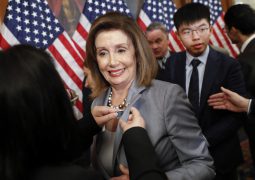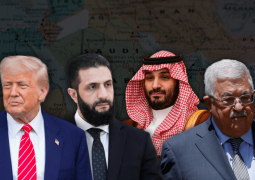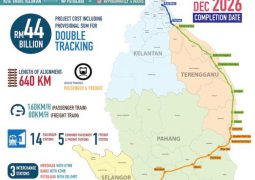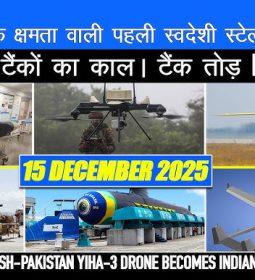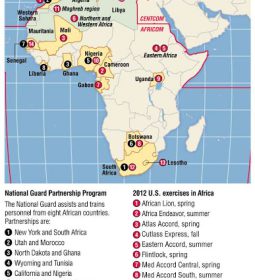Geopolitics and Analysis: The United States is Losing Latin America to China
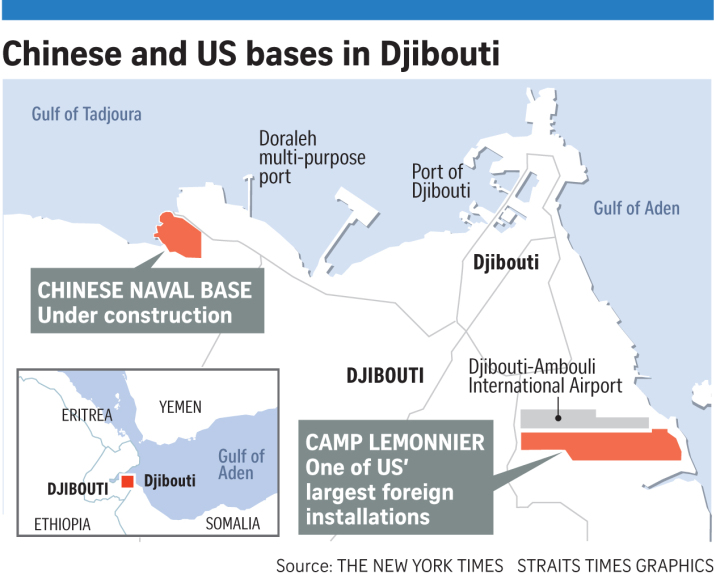
The United States is Losing Latin America to China
HISTORICALLY SPEAKING, the United States has been sensitive about foreign powers involving themselves in the affairs of the Western Hemisphere. Yet with the collapse of the Soviet Union at the end of the Cold War, Washington seemed to forget about its “backyard” in the Americas. Instead, the U.S. foreign policy establishment focused on Eurasia, particularly after 9/11. Sensing an opportunity to attain influence in the region at the expense of the United States, China has stepped into Latin America—strengthening diplomatic ties, expanding trade relations and pouring tens of billions of yuan into infrastructure investments.
Beijing’s intentions were stated outright in a 2008 policy paper that, apart from a few China and Latin America hands, was largely overlooked at the time. Though China and Latin America are separated by the breadth of the Pacific Ocean, the paper stated that both sides “enjoy a time honored friendship” and “are at a similar stage of development and face the common task of achieving development.” The region’s then mostly left-wing governments, often ignored and at times antagonized by the United States’ cavalier attitude towards them, welcomed China’s message of harmonious and collaborative development. After all, China’s own model of state-led economic development has advanced its economy by leaps and bounds over the past four decades, lifting over 800 million people out of poverty and significantly increasing the ordinary citizen’s standard of living. Latin American countries could not help but covet achieving similar results. Now, over a decade later, China’s efforts have borne fruit. Beijing wields sizeable economic and diplomatic influence in the region, much to the consternation of a Washington that is now thoroughly hawkish on China. Yet despite this new attitude, American policy towards the region has not seen much of an improvement. Under President Donald Trump, the U.S. government has imposed tariffs, cut off aid to countries that do not do more to stop migration to the United States, and is seemingly determined to build a literal wall along the southern border with Mexico. But beyond the day-to-day whims of the Oval Office, there is a much deeper internal conundrum that U.S. policymakers must face: China has proven that government-led industrial policies can work.

These have been so successful that they have lifted millions of people out of squalor and have enabled China to compete with the United States in economic development, high-tech industries and more. In defending its preeminence over the New World, the United States will have to do more than merely recalibrate its regional policies: Washington’s political establishment will have to confront its own ideological assumptions—particularly those that inform its approach towards geoeconomics. Doing so will require overcoming a long-held aversion to state-led economic initiatives and the notion that the free market holds unquestionable authority over matters of economics and finance. The best way to start this journey is to examine what, precisely, China has achieved down south.
CHINA’S POLICY papers from 2008 and 2016 are rather clear in proclaiming the “goal of establishing a comprehensive and cooperative partnership featuring equality, mutual benefit and common development with Latin American and Caribbean countries.” The emphasis on development is encouraging for Latin American governments, as it indicates that China wants to help address a sore need in the region—one that has always existed and continues to exist even now. With more than 60 percent of the region’s roads remaining unpaved, 70 percent of sewage going untreated, and unreliable power grids resulting in enormous losses in electricity, there is plenty of work to be done. The United States is certainly aware of Latin America’s needs. It was only a few years ago that, in the 44th Annual Washington Conference on the Americas, then-Commerce Secretary Penny Pritzker noted that there are significant U.S. investment opportunities available in Latin America, especially in infrastructure.
But while the United States must convince private companies to invest down south, China, with its state-owned enterprises (SOEs), can move and build faster. And so, with China signaling that it could commit to substantially increase its presence in the region, and that it stood ready to deploy billions of dollars to promote much-needed trade, investment and infrastructure development, how could Latin American governments possibly turn Beijing down? After all, this is a country that since 1978 has, according to the World Bank, “experienced rapid economic and social development. gdp growth has averaged nearly 10 [percent] a year—the fastest sustained expansion by a major economy in history—and more than 850 million people have lifted themselves out of poverty.” It is a track record that speaks for itself, and one that many developing nations wish to emulate.
China took up the invitation of Latin American governments and immediately got to work. Between 2000 and 2017, according to Red-ALC China, Chinese companies invested over $109 billion in Latin America; separately, the Inter-American Dialogue’s China-Latin America Finance Database estimates that, since 2005, Chinese policy banks (the China Development Bank and the Export-Import Bank of China) have disbursed more than $141 billion in loans, with 87 percent of those funds directed towards energy and infrastructure projects.
A more recent report from the Inter-American Dialogue and Boston University’s Global Economic Governance Initiative puts the loan amount at over $150 billion, which exceeds the combined lending of the World Bank, the Inter-American Development Bank and the caf-Development Bank of Latin America. Out of the aforementioned $141 billion in policy bank loans from 2005 to 2017, $96.9 billion (68.5 percent) has gone into energy-related projects, $25.9 billion (18.3 percent) into infrastructure development, $2.1 billion (1.5 percent) into mining projects and $16.2 billion (11 percent) into other ventures (including government bonds, trade financing, business development and more). One might ask: why are the majority of these loans going to the energy sector? Perhaps the answer lies in the Global Energy Interconnection proposal put forward by State Grid Corporation of China Chairman Liu Zhenya. The plan, designated a “national strategy” by Chinese president Xi Jinping, can be described as the energy equivalent of the transportation infrastructure-focused Belt and Road Initiative: it seeks to build a global electricity grid mainly based on ultra-high-voltage (UHV)—a technology that enables electricity to be carried across enormous distances with greater efficiency than current high-voltage lines. Who would control this grid? Chinese officials say that, like the Internet, “no one” would. Yet such a claim cannot be so readily accepted. For starters, China itself is, in the words of a study from the Paulson Institute, “intensifying its efforts to set indigenous standards for homegrown ultra-high voltage transmission technology” and seeking to “contribute to UHV standards internationally.” This sort of standards-setting in the international arena, along with the network effects that come with it, is concerning to Western political and security analysts. After all, this is a traditional area of great power competition, since states whose technology becomes the dominant standard can use it against others.
Additionally, the best way to secure control, or at least influence, over this hypothetical global power grid would be through controlling or influencing the power plants that contribute to it. In Latin America, there are dozens of such projects: the San José hydroelectric plants in Bolivia, the Reventazón Dam in Costa Rica, two nuclear power plants in the Patagonia region of Argentina, the natural gas Martano power plant in Panama, and so on and so forth. In addition to energy infrastructure, there is also the usual transportation infrastructure that is invoked by analysts when they discuss the Belt and Road Initiative. Chinese SOEs, such as the China Harbour Engineering Company, have been busy building and acquiring container ship terminals across the region, from the Panama Canal to Manzanillo in Mexico’s Pacific coast. Meanwhile, Chinese giants Huawei and ZTE have built telecommunications networks in many Latin American countries. And all of these various projects, of course, have been or are being built by companies that are either close to China’s government or are outright SOEs. THOUGH CHINA’S presence in the United States’ sphere of influence is troubling for Washington, it is hard to deny that Beijing isn’t helping the region meet its enormous infrastructure needs. But Latin American countries may not be benefiting as much as many think they are. Take China’s loans as an example. Of the aforementioned $141 billion in loans calculated in 2017, $115.3 billion came from the China Development Bank (the remaining $25.8 billion from the Export-Import Bank of China). These loans have a higher interest rate on average than their international counterparts, leaving recipients having to pay back more over time. This comes with a presumed upside for developing countries though: unlike loans from Western institutions, Chinese loans do not have governance and environmental conditions attached to them. In other words, there is no need to conduct lengthy, time-consuming environmental surveys, costassessment studies, inordinate transparency measures and more.
Yet what has happened to Ecuador perhaps best demonstrates the kind of negative repercussions that can occur when massive loans are made to developing countries with no governance or environmental strings attached. According to data from the Inter-American Dialogue, as of late 2018, Ecuador has taken around $18.4 billion in loans from China’s policy banks—adding up to about a third of Ecuador’s public debt. This money was used to fund a number of projects, the largest of which (to the tune of $1.7 billion) is the Coca Codo Sinclair hydroelectric dam. Unfortunately, as an in-depth investigation by The New York Times has revealed, the Coca Codo Sinclair project has been an embarrassing disaster. For one, against all common sense, it was built near a volcano that has been active since the sixteenth century. Not only is the area seismologically active, but a 2010 independent review of the project “warned that the amount of water in the region to power the dam had not been studied for nearly 30 years.” Then there are issues with the construction of the dam itself. Chinese loans, while usually free of governance and environmental requirements, do come with certain conditions—namely that infrastructure projects must employ Chinese SOE construction firms and use Chinese equipment, barring other competitors from partaking in infrastructure development contracts. These sorts of conditions can exclude international, and more importantly, domestic firms from participation in the building process. Additionally, this limits the potential positive impact on the local economy—little to none of the construction work is sourced out to local workers, nor is there an increased local demand for food/products/services. Most importantly, the lack of transparency measures can result in lax standards for material acquisition and construction. In Coca Codo Sinclar’s case, over seven thousand cracks have developed due to the usage of substandard steel and an inadequate welding job by Chinese builders. In short, for a $1.7 billion loan, Ecuador received a faulty, overly-large, crumbling dam that can only work at half capacity due to the country’s wet/dry seasons—and that is when everything is working well. So how will Ecuador pay for this dam, and everything else, to the tune of $18.4 billion?
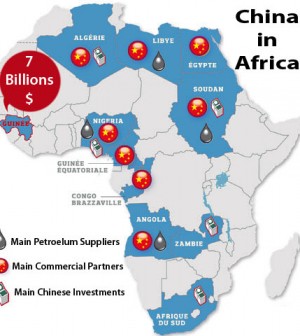
That remains an unanswered question. In the meantime, it is paying back China with its most valuable export: oil. To be more specific, China gets to keep around 80 percent of the country’s oil (which makes up around 58 percent of Ecuador’s exports) at a discount due to the loan contracts, which stated that debt is to be repaid in oil instead of currency. This pursuit of commodities also serves as another instance of how China’s economic behavior isn’t necessarily benefiting Latin American countries as some might think. On paper, there is a blossoming trade relationship between China and the region: a 2018 report from the un’s Economic Commission for Latin America and the Caribbean shows that the value of the trade of goods between China and Latin America has grown from a few billion in 2000 to around $266 billion in 2018. However, what matters is what’s being traded. As it turns out, in 2016, manufactured goods accounted for 91 percent of Latin America’s imports from China, compared to 68 percent from the rest of the world. Meanwhile, commodities (particularly, in order of importance, soybeans, copper ore, iron ore, refined copper and oil) accounted for 72 percent of Latin America’s exports to China, compared to 27 percent for the rest of the world. Keeping Latin American economies concentrated in commodities and resource extraction does not benefit them. Aside from not adding much value to the lives of domestic consumers, these are highly cyclical industries that often go through periods of booms and busts. When a commodities cycle ends, as one did following the 2008 financial crisis, governments can suddenly experience a loss in income and political stability. Ideally, developing economies should aim to develop their domestic manufacturing sectors, which provide more jobs, reduce the dependence on manufactured imports and open the door for more domestic entrepreneurship. Unfortunately, the growth in the import of Chinese manufactured goods has meant stiff competition for Latin American companies. A 2017 report from the International Labor Organization found that, between 1995 and 2011, employment in “computers, textiles and footwear, as well as trade – was reduced by 1 million jobs due to the Chinese imports” in Argentina, Brazil, Chile and Mexico alone. A separate analysis found that, “from 2008 to 2013, 75 [percent] of the region’s manufactured exports faced a threat from China,” though this is an improvement from the period between 2003 and 2008, when the figure stood at 83 percent.
Additionally, this report finds that “it is unlikely that the reduced threat comes from better labor productivity in the [Latin American] manufacturing sector, because China’s productivity continues to outpace labor productivity in [Latin American] manufacturing.” Overall, China’s economic expansion into Latin America has been extremely favorable for Beijing. Investments in infrastructure either enable greater economic activity that favor Chinese interests, and/or thrust Latin American countries into debt traps, effectively turning them into economic vassals. Either way, China benefits. Over the long term though, this is a dangerous proposition: local populations in these countries could grow disgruntled at what they see as a new imperialism originating from the East. This is not lost upon Chinese policymakers. With keen foresight, they supplement their economic statecraft with diplomatic initiatives and unconventional security measures. These, too, are visible in Latin America. ON PAPER, when it comes to international diplomacy, China is focused on promoting “the construction of a new type of international relations with win-win cooperation at the core.” It seeks to achieve this through “exchanges and mutual learning, as well as carrying forward the [China-Latin America] friendship from generation to generation,” according to the 2016 policy paper on Latin America. In practice, this means that China uses its diplomatic heft to shape local agendas and viewpoints, all to create an environment where it can operate with minimal disruption. An example of this is the Community of Latin American and Caribbean States (CELAC), a thirty-three-member regional bloc that notably excludes the United States and is seen as an alternative to the U.S.-led and headquartered Organization of American States (OAS). Beijing has engaged CELAC rather enthusiastically via the China-CELAC Forum and a cooperation plan for the years 2015 to 2019. This plan lays out how China and Latin American countries can more closely cooperate with one another on matters of economic development, fostering ties and so forth. It also provides China, in the words of Juan Pablo Cardenal, the author of a 2017 report from the National Endowment for Democracy (NED), “a convenient policy framework to introduce and promote its soft power agenda” in the region. Some of this is plainly visible in the plan itself. China, for example, provided “CELAC countries with 6,000 governmental scholarships, 6,000 training opportunities and 400 opportunities for onthe-job master degree programs in China between 2015 and 2019.” The NED report adds that Beijing also provided more funding for international scholarships, with official figures estimating “377,000 foreigners studied in China in 2014, up from 84,000 a decade earlier.
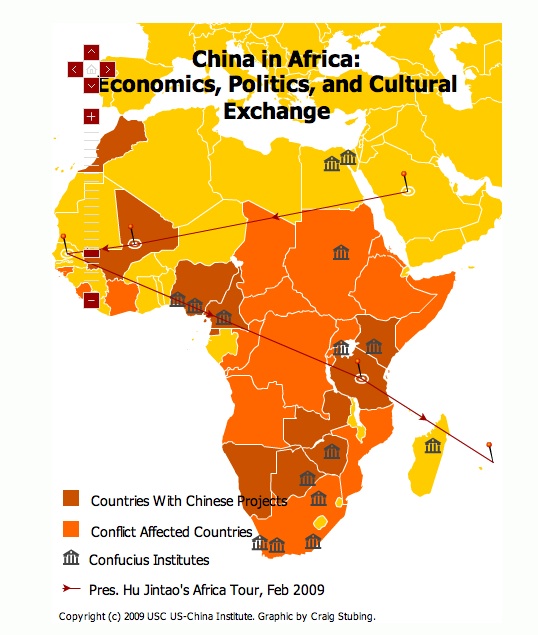
Furthermore, the Chinese government plans to raise that figure to 500,000 by 2020.” This spree of seemingly generously philanthropic funding actually helps serve China’s interests: it presents an opportunity to influence the views of current and future Latin Americans, giving them a rose-tinted view of Chinese society and achievements. Chinese state-sponsored media training, for example, probably does not cover the necessity of a free press, editorial independence and investigative reporting. In fact, the U.S.-China Economic and Security Review Commission found that many of these media training programs—managed by Xinhua, China’s official staterun news agency, and the People’s Daily, the official newspaper of China’s Communist Party —“are explicitly political and are intended to improve foreign perceptions of China and legitimize the ruling party.” In Latin America, this sort of influence is already manifest. Since 2018, the nonprofit research group Global Americas has, for example, been reviewing articles aimed at Latin American audiences provided by Xinhua and the People’s Daily, and has found that they present an overly positive view of China’s economic ties with the region. Meanwhile, media partnerships help expand China’s influence even further: Brazil’s Agência Brasil, Cuba’s Granma, Venezuela’s TeleSUR and Chile’s La Tercera frequently republish material from Xinhua, People’s Daily and China Daily, another state-run publication. Similarly, China Daily has a “China Watch” supplement in the Argentinian newspapers Diario Uno, La Capital and Cronista. Washington shouldn’t be too surprised at such overt influence campaign though, seeing as similar efforts are also underway at home. Look no further than the presence of Confucius Institutes within U.S. universities, the funding of think tanks by entities linked to the Chinese Communist Party, and of course, paid inserts in high-profile Western newspapers. Even The New York Times and The Washington Post, often regarded as the U.S. newspapers of record, run and have run (respectively) insert sections with content created and paid for by China Daily. This strategy, which Chinese officials call “borrowing foreign newspapers,” illustrates how Beijing can shape political discourse overseas at a relatively low cost.
CHINA’S MILITARY and security activities in Latin America are understandably subtler than their economic initiatives—anything too bold, like stationing military units in the region, would set off alarm bells in Washington and other capitals. Rather, Beijing has focused on importing something into Latin America that is far less provocative but is no less worrisome: its internal security model. Ecuador, for example, has set up ECU-911: a 4,300-camera national video surveillance and emergency response system designed and built by Chinese companies Huawei and China National Electronics Import and Export Corporation (CEIEC). Meanwhile, Bolivia has a similar system also built by CEIEC called BOL-110, though it is currently operating at a far smaller scale (around six hundred or so cameras) than its Ecuadorian counterpart. Both are touted for bringing down crime and helping local police, firefighters and first aid responders do their jobs more effectively, and are now widely accepted in these countries. However, an investigation by The New York Times earlier this year found that, in Ecuador’s case, some surveillance footage “also goes to the country’s feared domestic intelligence agency, which under the previous president, Rafael Correa, had a lengthy track record of following, intimidating and attacking political opponents.” That they are being monitored does not seem to bother Ecuadorian citizens all that much. After all, privacy concerns and possible political implications take a backseat to the daily realities of drugs and gang violence in Latin America.
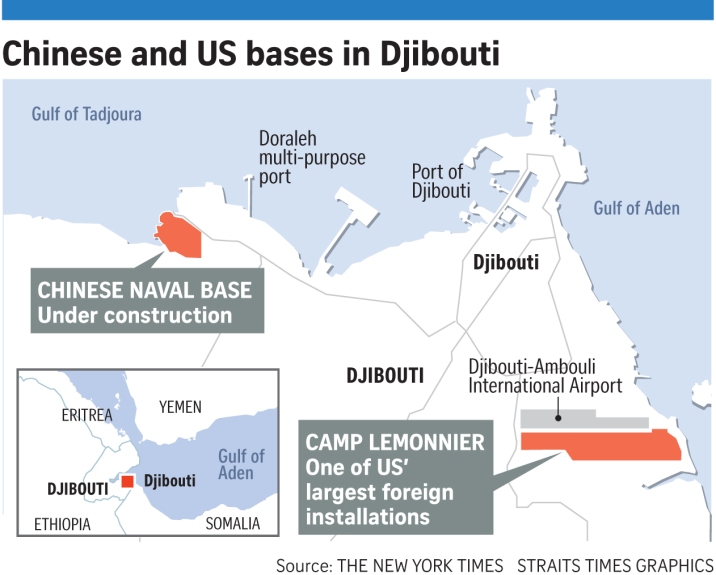
Nonetheless, it is not hard to imagine a future where a Latin American ruler decides to use such a surveillance network for more sinister purposes, such as tracking or sanctioning political opponents, government dissidents/critics, protestors and so forth. If anything, some governments might decide to go further. Venezuela, for instance, turned to China to help design a national identity program. Seeing what was possible with the help of Chinese telecoms giant ZTE, Nicolás Maduro’s government took inspiration from China’s social credit system to create the “fatherland card” ID system. This system collects a vast amount of data on any particular individual—including personal information, state benefits received, voting records and more—making it very easy for the Venezuelan government to exert control over the daily lives of citizens.
Latin American rulers holding this sort of sway over their respective domestic populations suits Beijing’s purposes quite well, as it makes it easier for governments to crush political dissent— particularly any that is aimed towards Chinese economic interests. If that isn’t enough, and if certain facilities require more protection than the usual, China may decide to up the ante by stationing its own forces within these countries. China’s own 2015 defense strategy white paper notes that, “in response to the new requirement coming from the country’s growing strategic interests, the armed forces will actively participate in both regional and international security cooperation and effectively secure China’s overseas interests.” Indeed, safeguarding “the security of China’s overseas interests” is deliberately listed as a strategic task of China’s armed forces. A more blunt assessment comes from retired People’s Liberation Army (PLA) colonel Yue Gang, who said that “the PLAin the future will need to go abroad to protect China’s overseas interests in countries along the Belt and Road Initiative.” In Latin America, there are a number of possible sites. For example, there is a satellite and space control station in Argentina that was built by the Chinese military and is currently being leased rent-free to China for a period of fifty years. Likewise, any number of the dozens of commercial shipping ports in the region, particularly those that were originally built or expanded by Chinese companies, could be acquired and converted to military bases under the pretext of safeguarding Chinese commercial and economic interests. WITH CHINA expanding its footprint in Latin America, it is no surprise that U.S. policymakers and defense officials have begun to sound increasingly anxious. Part of it is recognition that China is indeed becoming very much involved in what Washington considers to be its own local sphere of influence. More broadly and more importantly though, part of it is the fact that the U.S. foreign policy establishment has finally awakened from what journalist James Mann back in 2007 called “the China fantasy”—the neoliberal ideal that economic liberalization in China would inevitably also result in political and social liberalization. It is this conceited point of view, so doggedly self-assured of the inevitable triumph of neoliberal economic policies and liberal democratic governance, that prevented U.S. policymakers from acting sooner.
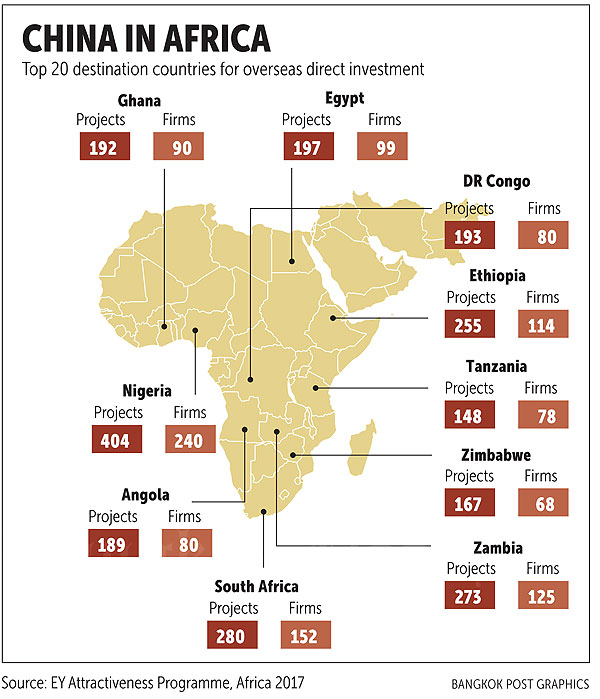
Yet while Washington seems to have woken up to this new challenge on its doorstep, it apparently has no idea how to address it. The Trump administration’s current policy, for instance, reads like something straight out of the Cold War, with an undue focus on the region’s left-wing governments and a not-so-subtle unspoken desire for CIA-backed regime change operations. Even some of the actors are still the same: look no further than the decision to appoint Elliott Abrams, a diplomat known for his involvement in the Iran-Contra scandal, as U.S. Special Representative for Venezuela. The end of the post-Cold War interregnum of U.S. preeminence implies a return to a multipolar, or at the very least, bipolar, world order. National economic policy can no longer be separate from military and diplomatic policy: all must be coordinated together in order to ward off the strategic and economic consequences of a changing international environment. If the United States intends to retain its leadership in high-tech industries, global finance, and most importantly, international aid/development, it is apparent that it too must develop a long-term economic strategy that addresses both domestic and international concerns. This is something that America’s allies seem to have already realized: Germany’s federal minister for economic affairs and energy, Peter Altmaier, has declared that the German government should be able to purchase stakes in systemically important companies if it means preserving national security. Separately, Altmaier and his French counterpart, Bruno Le Maire, have put out a joint manifesto proposing “a European industry policy designed to better protect and promote ‘European champions.’” The United States will have to start thinking along similar lines. Presidential, as well as Congressional leadership, will be necessary. The question is, where to begin? A good starting point would likely be to do some house cleaning: the U.S. government is currently not capable of putting together a unified geo-economic strategy. All the relevant organizations are spread out across Washington in various offices. The U.S. Trade Representative, for example, is located with the Executive Office of the President, while the International Trade Administration is in the Commerce Department. Meanwhile, the ExportImport Bank, the U.S. Trade and Development Agency, the International Development Finance Corporation (USIDFC) and many more are independent entities.
Consolidating these various agencies and offices into a single department (whether new or existing) headed by a cabinet-level official charged with formulating and implementing geo-economic policy would put the United States in equal standing with its peers. Next, policymakers must embrace the challenge of devising cost-effective yet still-effective international development strategies as an instrument of U.S. power. China, as we have seen, is prepared to spend billions of dollars in building infrastructure, sponsoring educational opportunities and more. By way of comparison, the USIDFC, which is the U.S. agency responsible for financing private development projects, only has $60 billion in funding for the entire world—a mere two-fifths of the amount China has lent to Latin American countries alone. Washington will have to get creative to ensure that it gets the most bang for its buck. The best way to achieve this is by supporting efforts that help developing countries help themselves. For instance, the United States can help in infrastructure development by financing the environmental assessments or community consultation stipulations that come with World Bank loans. Alternatively, perhaps it can fund urban planning or engineering departments in Latin American universities, producing better-trained experts that can properly oversee local and regional infrastructure projects. Separately, the United States can tap into its greatest asset—the sheer financial might of its private sector—by encouraging it to buy and refinance Latin American debt to China with longer repayment terms. Akin to the “Brady Bonds” pioneered in the 1980s, this initiative could temper Chinese influence and reduce the payment burdens that these countries face. Finally, the United States must work to improve its diplomatic relations with Latin American countries. This will be a difficult task, to say the least, given both the current administration’s recent moves and, more broadly, Washington’s rather colorful history with the region, which includes military interventions, multiple coups, economic impositions and more. Critics usually have a favorite grievance they can recite from memory. Overcoming this will require reexamining the Monroe Doctrine in its original context: not as a pretext for imperial domination of the Western Hemisphere, but rather a responsibility to protect our “sister republics” in the New World from the political machinations of the Old.

One possible avenue for this change is the OAS. Latin American critics of the institution perceive it to be dominated by the United States, while Washington often feels it holds little power over it. In reality, the organization is struggling due to an ill-defined mission, an unclear focus, and an overabundance of programs and projects that have proliferated out of control but lack the necessary budget to work. Reforming the OASto serve as a more reliable platform for regional economic collaboration, educational opportunities and advocacy of democratic norms could yield multiple benefits. More importantly, delegating power and responsibility to Latin American countries would send a signal that the United States is capable and willing to listen to the views and concerns of its peers. All this can be achieved relatively cheaply too: the OAS’ current annual budget is a paltry $84 million. Adding a few more million, not even a fraction of a fraction of what the U.S. government spends elsewhere, would yield enormous diplomatic returns. IN ROBERT Sobel’s For Want of a Nail, an alternative history book, fictional Mexican politician Pedro Hermión gives a truculent foreign policy address at his party’s national convention. He declares: In Mexico del Norte the Mexicanos have a game – some call it a sport. The peasants put two scorpions in a large bottle, and then take wagers as to which will win the struggle. Slowly the scorpions circle each other, until one lashes out at the other, and strikes him dead. So it is on our continent. Though the context is very different, Hermión is certainly right about one thing: the Americas are, in reality, a small place, and having two great powers like China and the United States competing over this landmass is a precarious proposition. In order to uphold and sustain regional stability, Washington must stop using its might like a club (heavy-handed, blunt and dumb), and relearn the art of wielding influence like a rapier (swift, elegant and precise). Above all else, what is intolerable is the casually irresponsible attitude towards power and its use. If there is one unbeatable advantage that the United States still possesses over China though, it is that it can still project a cultural and moral authority that people around the world admire. Individuals still aspire to the idea of a fair and democratic government that respects the rule of law, free speech, freedom of religion and so on. China, for all its economic advancement, reveals its own weaknesses every time it oppresses religious minorities, silences internal dissent, or otherwise fails to successfully persuade other countries to become subservient in a greater Chinese cultural whole. It cannot convince, so it must compel. In Latin America though, hard power is of limited utility; soft power through economic and diplomatic influence will carry the day in the region. This is something that Washington ought to ponder.
Carlos Roa is the senior editor of the National Interest
- Previous Taliban attacks kill 48, Afghan leader unhurt as bomber targets rally
- Next China’s railway spending plummets as Beijing struggles to sustain momentum




